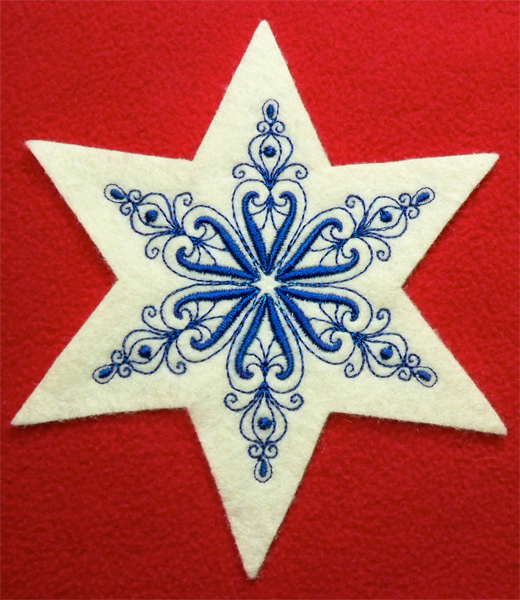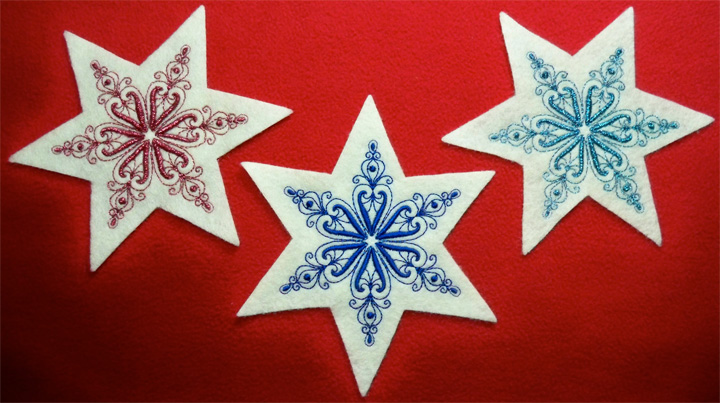
Metallic embroidery threads adds a touch of class to any project—if you can stand to use them that long! Here are some tips for avoiding pitfalls typically associated with metallic threads.

Although this design is beautiful stitched in rayon, the metallic snowflake is exquisite (the photo does it no justice).Two things are certain when discussing metallic embroidery threads. First, they are gorgeous. Second, they are terrifying for embroiderers of all skill levels.
With some minor adjustments, you may find that embroidering with metallic thread is not as painful as many might have you think!

Metallic, rayon, metallic.
Thread
This is one area where you do get what you pay for. Better threads contain several protective layers, making them perform better. The quality also affects how the thread kinks and twists, which creates problems with thread breakage in the machine.
Some metallic thread fibers are round. Others are flat. Obviously, flat fibers have edges that drag more than those of their round counterparts and create more of a challenge.
Depending on the way certain metallics twist, standing the thread pin up instead of having it extend horizontally, can sometimes eliminate problems.
Dropping the thread below the level of the machine can also help. Place it in a cup or small jar on the floor beside the machine. Many recommend using a thread stand. Either way, the trick is to give the thread enough space to relax between the spool and machine.
Needle
A larger, elongated eye (as in a 90/14 needle) helps eliminate thread fraying and breaking. Some embroiderers like to use metallic needles. Others prefer topstitch needles.
The type of needle also plays a part. Titanium-coated needles are specifically created to reduce friction and last longer.
Tension
The upper tension needs reduced when sewing with metallic threads. Some manufacturers recommend specific tension settings for their threads (I’ve seen top tensions as low as 1 recommended). Others suggest adjusting the bobbin tension, which can lead to problems all their own.
Stitching Speed
Reduce the stitching speed to avoid thread breakage. I usually cut mine down to about half-speed.
Design
Designs with high stitch counts are going to be challenging when using metallic threads. So are designs with heavy satin stitching.
I’ve found that, because the top tension is reduced more than normal, the width of designs will be larger (and thicker) when using metallic thread, so that has to be taken into consideration as well.
Stabilizer
The lightest stabilizer for the job will alleviate drag when the thread is stitched through layers. That is particularly true when quilting with metallic thread.
Fabric Weight
Metallic threads work better on cotton fabrics than on organza. That's not to say you shouldn't try light-weight fabrics, but know they may need special attention when embroidering with metallic threads.
These tips are only suggestions. Results are going to vary according to machine, thread type, stabilizer type, fabric, and, often, planet alignments.
Always test designs and record the settings/needles/threads that work best so you can easily recreate the project (or one like it) at a later date!
Debbie SewBlest